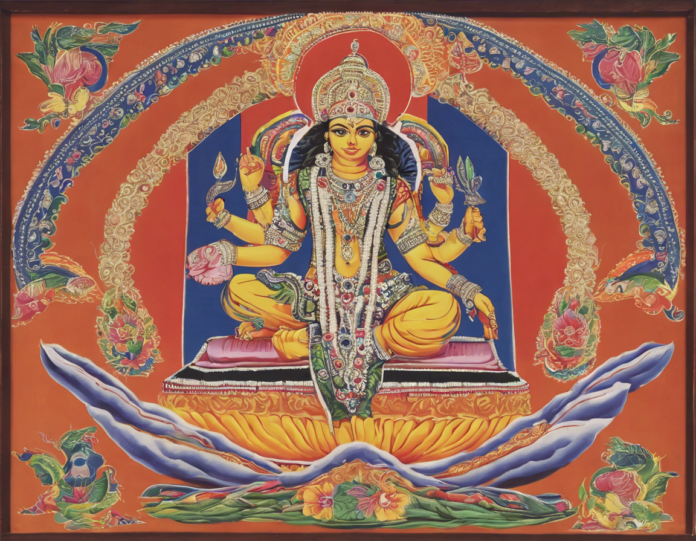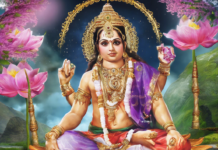The Kalika Purana is a significant scripture in Hindu mythology that delves into various aspects of Hinduism, worship, rituals, and cosmic creation. This ancient text is dedicated to the glory of Goddess Kali, one of the fierce forms of Shakti. The Kalika Purana is revered by devotees of Kali and scholars alike for its profound teachings and mythical narratives. In this article, we will unravel the mysteries of the Kalika Purana, exploring its themes, stories, and significance in Hindu spirituality.
Origins and Composition
The Kalika Purana is believed to have been composed in the 5th century CE, although some scholars argue that its origins may date back even earlier. The text is written in Sanskrit and is structured as a dialogue between Sage Veda Vyasa and Sage Markandeya. It is divided into three parts, known as Kriyapada, Caryapada, and Ullasadhyaya, each dealing with different aspects of worship, rituals, and cosmology.
Themes and Teachings
Worship of Goddess Kali
At its core, the Kalika Purana is a guidebook for the worship of Goddess Kali. The text describes in detail the rituals, mantras, and offerings that devotees should perform to seek the blessings of the Goddess. It emphasizes the fierce and protective aspects of Kali, portraying her as the ultimate destroyer of evil and dispeller of ignorance.
Cosmic Creation
Like many Hindu scriptures, the Kalika Purana also delves into the mythological aspects of cosmic creation. It describes the origin of the universe, the cycles of creation and destruction, and the roles of various deities in maintaining cosmic order. The text portrays Goddess Kali as the primordial energy from which the universe emerges and eventually merges back into.
Stories and Mythology
The Origin of Goddess Kali
One of the central myths in the Kalika Purana is the origin of Goddess Kali. According to the text, Kali emerges from the brow of the warrior goddess Durga during a battle with the demon Raktabija. Kali’s fierce form and unbridled fury make her a formidable force against evil forces, earning her the title of the Dark Mother.
The Demons Shumbha and Nishumbha
The Kalika Purana also narrates the story of the demon kings Shumbha and Nishumbha who seek to conquer the heavens and overthrow the gods. In their arrogance, they challenge the powers of Goddess Kali and Durga, leading to a fierce battle that culminates in their destruction.
Significance in Hindu Spirituality
The Kalika Purana holds immense significance in Hindu spirituality for several reasons:
Empowerment of Women
Goddess Kali, as depicted in the Kalika Purana, embodies the empowerment of women and the overthrow of oppressive forces. Her fierce form challenges traditional gender roles and societal norms, inspiring women to embrace their inner strength and fight against injustice.
Tantric Practices
The Kalika Purana also serves as a foundational text for Tantric practices, which focus on harnessing the divine energy of the cosmos for spiritual growth. The rituals and mantras described in the text are integral to Tantric worship and are believed to lead practitioners to enlightenment.
Symbolism and Alchemy
The stories and symbols in the Kalika Purana hold deep alchemical and symbolic significance, representing the transformation of the soul and the conquest of inner demons. The Goddess Kali, with her dark complexion and fierce demeanor, symbolizes the destruction of ego and the liberation of the self.
Frequently Asked Questions (FAQs)
1. What is the significance of Goddess Kali in the Kalika Purana?
Goddess Kali represents the fierce and protective aspect of Shakti in the Kalika Purana. She is revered as the ultimate destroyer of evil and the dispeller of ignorance.
2. How does the Kalika Purana contribute to Hindu mythology?
The Kalika Purana contributes to Hindu mythology by narrating stories of cosmic creation, the battles between gods and demons, and the significance of worship and rituals.
3. What are some common rituals performed to worship Goddess Kali as per the Kalika Purana?
Common rituals to worship Goddess Kali include reciting mantras, offering flowers, incense, and food, and performing puja with devotion and reverence.
4. How does the Kalika Purana empower women in Hindu spirituality?
The portrayal of Goddess Kali in the Kalika Purana empowers women by challenging traditional gender roles and inspiring them to embrace their inner strength and agency.
5. What is the role of Tantric practices in the Kalika Purana?
The Kalika Purana serves as a foundational text for Tantric practices, which focus on harnessing divine energy for spiritual growth and enlightenment.
In conclusion, the Kalika Purana stands as a profound and enigmatic scripture in Hindu mythology, offering insights into the worship of Goddess Kali, cosmic creation, and spiritual empowerment. Its teachings continue to inspire devotees and scholars alike, shedding light on the mystical and transformative aspects of Hindu spirituality.









